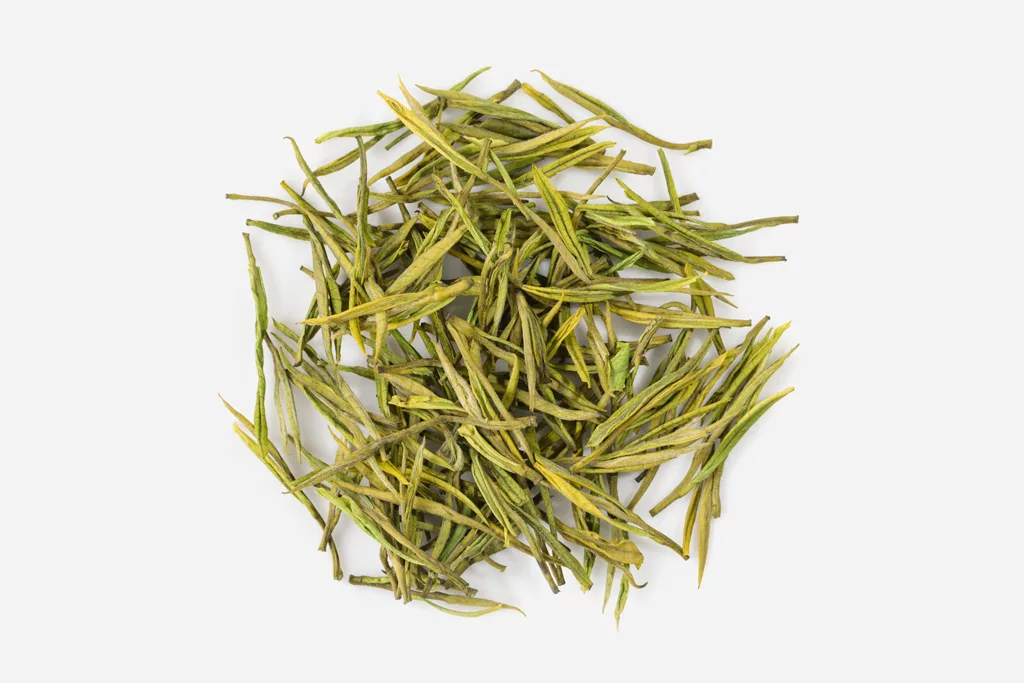In the world of tea, there is always something surprising and new. For a tradition said to go back thousands of years while still maintaining a high degree of popularity with a modern audience, gems and treasures are sure to be found. Whether they are ancient secrets or more modern discoveries, the landscape of tea changes and evolves quite rapidly. And within the rich landscape that is the world of tea, albino teas are just such examples of treasures both ancient and newly uncovered. But what exactly are albino teas? And among the intriguing catalog of albino tea leaves out there, which ones are examples par excellence of truly masterful tea leaves?
Lighter leaves
Albino tea refers to tea cultivars that possess leaves that are distinctively lighter in color compared to standard tea leaf plants. Sometimes, this happens as a result of seasonal changes, with albino plants appearing lighter in spring before turning to a darker color later on when the plants are exposed to certain stimuli.
Albino teas are not new to the tea world. As far back as the 1100’s albino tea enjoyed a special status as rare and exciting leaves among connoisseurs and tea masters including the Huizong emperor of the Song dynasty.
Though far more antiquated than other tea cultivars out there, albino has not failed to attract attention among modern enthusiasts. There have recently been multiple studies on albino tea and currently, albino tea trees are split into two groups the thermosensitive and the photosensitive groupings.
The two groups of albino teas
The thermosensitive trees attain a lighter color when the temperatures they are growing in cool off. However, they develop a green color when the temperatures rise above 20 to 22 degrees celsius. Some examples of thermosensitive trees include the Xiaoxueya and the Anji Baicha.
The photosensitive group has some distinctions apart from their heat-sensitive cousins. For starters, the photosensitive group develops shoots that are light in color when there is a great deal of sunlight. Their leaves darken to a standard green when they experience less sunlight.
So when the variables are just right it is possible to find and enjoy albino leaves from albino tea plants before they go green due to too little sunlight or too much heat, depending on which group the albino tea plant falls under.
In some cases, when albino trees are shaded, whether artificially or naturally, their leaves will turn green but they will still possess a lower level of catechins compared to their non-albino counterparts. And even if the leaves have changed color and have been processed into white, green, oolong, or black tea, with the use of infrared spectroscopy or chemometrics, one can determine if a tea leaf in question is albino or not.
Which brings us to an important note when it comes to discussing albino tea. The designation “albino” refers to the tea leaves before they are processed and is not a new type of post-processed tea type. This is not to say that albino leaves and standard leaves processed into the same tea type do not have distinct flavors, aromas, or chemical compounds, though, because often times albino and standard plants will present some noteworthy differences in regards to flavors and chemical compositions, too.
Flavors and internal chemistry
When it comes to the taste of albino teas compared to non-albino cultivars, albino teas generally possess a noticeable umami taste that is free of bitter flavors and also possesses less astringency. The lack of astringent and bitter flavors is a reflection of some of the internal chemical processes that albino teas have in store for tea drinkers, like fewer catechines and lower caffeine levels.
Despite the lower-catechin and caffeine levels, albino teas have more amino acids and provide lots of the L-theanine compound found in other types of true teas. Many albino tree cultivars can be found in Zhejiang, Fujian, Sichuan, and Hubei provinces and even a few cultivars can be found in Japan, and with more research and testing, perhaps more examples of cultivars can be found around China, Japan, and perhaps even Korea, Vietnam and other heartlands of exquisite tea.
Zhejiang province in China in particular not only boasts some of the highest concentrations of albino tea cultivars but is also home to the Anji Bai Cha cultivar. Also known as the White Leaf No. 1, the Bai Ye Cha, and the Bai Ye Yi Hao, this cultivar which sports many names also sports a great deal of praise in the world of albino tea.
The Anji Bai Cha is said by some to be an incredible tea in regards to taste and quality, and when processed properly can be used to produce an exceptionally high-grade green tea. In addition to Anji Bai Cha, the Bai Ye, and the Bai Ji Guan cultivars are also albino teas worth taking a closer look, and certainly a first-hand brewing experience. Each one of these albino teas are special and no tea brewing will be dull when these amazing leaves are utilized to present a wonderful tea experience.
Anji Bai Cha
Named after Anji, the province where this albino tea can be found in Zhejiang province, Anji Bai Cha is truly a gem of the tea world. Coming from a tree that is not only albino but also sports large leaves, and a short harvest period, this tea is a rarity that wasn’t discovered until the 80’s.
Today, its rarity and exquisite quality make it among the most expensive of teas in all of China, which is no simple feat coming from the heartland of tea and tea culture! Though often listed as a white tea after processing, Anji Bai Cha is actually turned into a true green tea. Though the albino leaves can be deceptive in regards to appearances and its less astringent flavor may give it a character akin to a white tea. The flavor palette of Anji Bai Cha features an aroma that is sweet and pleasing with some delectable umami flavors that dance on the tongue.
Bai Ye
This albino tea from Guangdong province, like Bai Ji Guan, is often transformed into a resplendent oolong tea. But it is also counted among the rare prized plants that make up the albino tea family, too. Bai Ye is renowned for its fruity hints, flavors, and notes, and evokes the wondrous Fenghuang shan, or “phoenix mountains” in Guangdong where this spectacular tea comes from. The Fenghuang mountains are home to tea trees that are a few hundred years old and the climate, geography, and biodiversity of the mountains harmonize to create a truly otherworldly tea. The Bai Ye is certainly a tea to not pass up and is as rare and magnificent of an experience as seeing a mythical phoenix in real life.
Bai Ji Guan
Coming from the legendary Wuyi region of Fujian, the Bai Ji Guan cultivar is often used to make a regal oolong tea. And while it is considered to be a member of the Wuyi tea family, the Bai Ji Guan sports some distinctive traits that set it apart with its brocade of intense and complex flavors that are tempered by a mild flavor palette. Fruity, aromatic, with some vague yet noticeable hints of what one may place as candy or chocolate that coalesce alongside some floral aromas and hints.
The Bai Ji Guan’s name is often translated as “cockscomb” or “white rooster”. The name for this variety of tea is said to go back to the tale of a brave rooster, who defended his vulnerable hatchlings from a hungry eagle. As the story goes, the rooster was killed defending its young, but his sacrifice was not in vain, as a monk who witnessed the struggle buried the courageous rooster with honors, and miraculously, the Bai Ji Guan plant sprouted from the slain bird’s tomb. What can be known for sure is that the leaves of this tea variety bear a yellowish to pale green hue that makes for a striking tea.
Albino tea cultivars; Rare and unrivaled
As the interest and knowledge of albino tea trees increases, more research and exploration of these amazing members of the tea family are sure to follow. Albino teas are rarities that put on a real show when they are brewed. The flavors, hints, aromas, and overall tasting experience is unlike any other variety of tea. Thanks in part to the different chemical composition of many of these albino tea plants, albino teas have made a name for themselves as jewels of the tea world.
The Anji Bai Cha, the Bai Ye, and the Bai Ji Guan cultivars in particular are superb examples of this rare and surprising variety of tea trees. The Anji Bai Cha, the Bai Ye, and the Bai Ji Guan are all wondrous and extraordinary teas to enjoy, each of which brings something different and unique to the table. From the Bai Ye’s fruity sweetness, to the Anji Bai Cha’s regal umami palette fit for an imperial setting, to the Bai Ji Guan’s truly unexpected palette of impressive and symphonically juxtaposed flavors, aromas, and hints. Ancient wonders come alive and make for superb and wondrous teas to enjoy in the modern era. Do not pass up on the chance to experience these incredible teas today.


